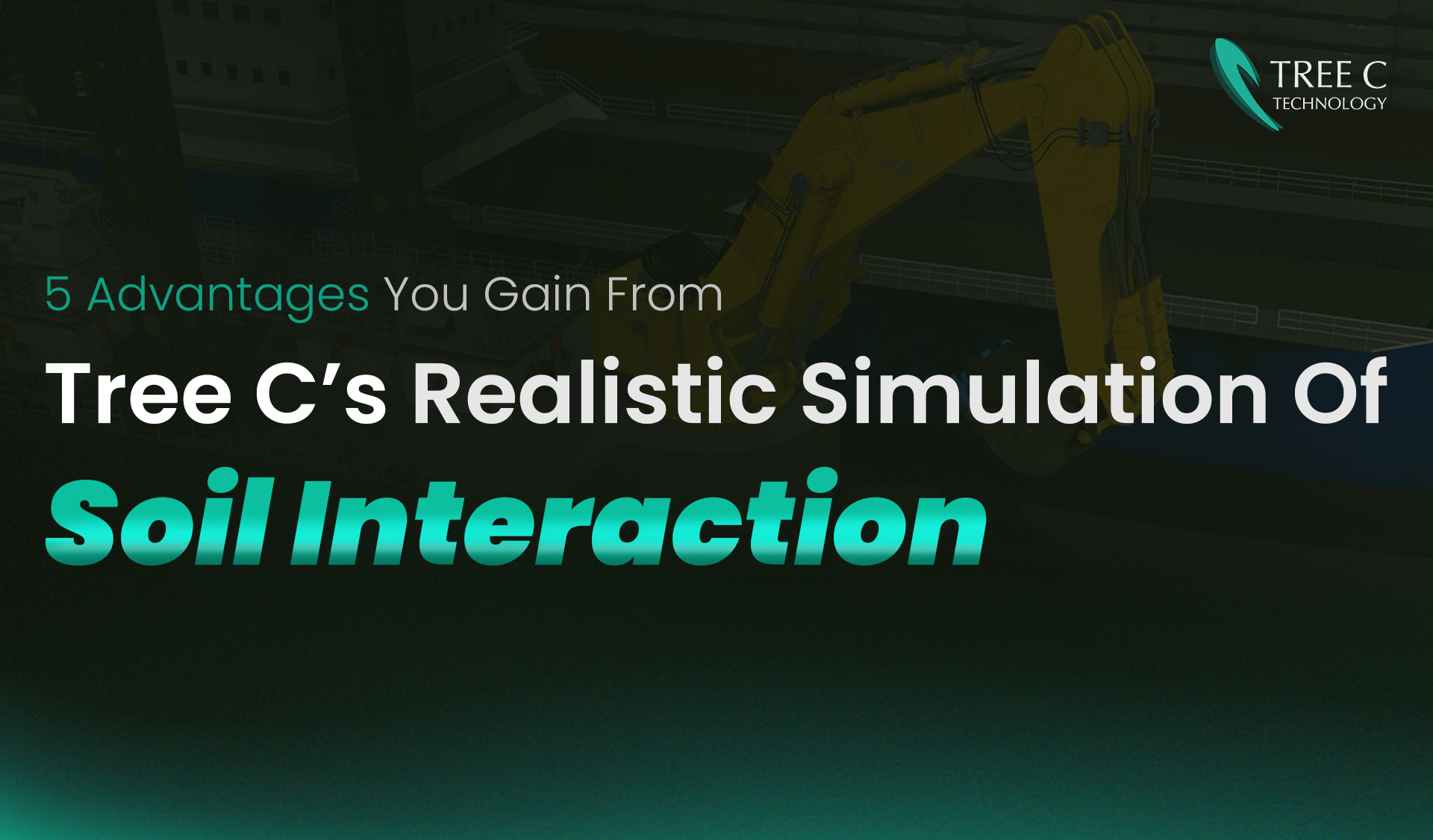5 Advantages You Gain From Tree C’s Realistic Simulation Of Soil Interaction

Performing complex tasks like dredging and trenching in challenging underwater environments presents significant operational challenges. From unpredictable bottom conditions to limited visibility and risk of collision, operators must navigate an often hazardous landscape.
Tree C training simulators can accurately replicate soil interactions, significantly enhancing your operational abilities. Here are five ways you can do that.
1. Master operations before you hit the water
Underwater excavation is more than just moving soil – it’s a precise operation requiring skill, efficiency, and environmental awareness.
Tree C’s simulator framework offers a cutting-edge training environment for operators to hone their skills before stepping onto a real vessel. With real-time 3D soil interaction, trainees learn how different soil materials – sand, silt, gravel, and clay – respond to equipment.
Operators can practice how to:
-
Achieve the optimal cutting depth
-
Prevent inefficiencies like fuel overuse
-
Avoid equipment blockages and costly downtime
By mastering these challenges in a simulator, your operators will improve production rates, reduce environmental impact, and minimize costly mistakes.
2. Optimize excavations with realistic 3D soil models
Not all underwater work environments are the same, and neither is the way equipment interacts with them. Tree C’s 3D soil models accurately replicate the behavior of mixed terrain materials – from soft silt to compacted clay, and rocky terrain.
That means operators can train in an environment where they literally feel the difference. Cutting through different soil types requires real-time adjustments to:
-
Power and speed
-
Equipment positioning
-
Cutting angles
This leads to greater efficiency, lower fuel costs, and reduced wear and tear on expensive equipment. Whether for excavation, trenching, or cable laying, Tree C ensures that operators are prepared for any underwater challenge.
3. Avoid collisions in complex underwater environments
In murky waters, visibility is low, and mistakes can be costly. A misplaced anchor or unexpected obstruction can damage equipment and delay operations.
Collision avoidance training – using a Tree C simulator – prepares operators for these challenges by replicating real-world hazards. Trainees learn to:
-
Maneuver vessels correctly in restrictive spaces
-
Maintain safe distances from anchors, cables and pipelines
-
Detect and respond to drifting anchors before they cause damage
By practicing in a simulator, operators develop situational awareness – reducing accidents, minimizing repair costs, and ensuring safer operations.
4. Train for operations in realistic low-visibility conditions
Underwater excavation and operations often happen in near-zero visibility. That means your operators must rely on gauges, sonar, and experience – rather than sight – to perform precision work beneath the water surface.
Tree C’s simulators replicate real-world low-visibility conditions, allowing trainees to:
-
Read instruments with confidence
-
Track anchor movement accurately
-
Control machinery without direct visual confirmation
By training in realistic virtual conditions, operators improve efficiency and accuracy – ensuring that trenching, excavation, and subsea cable laying happen as planned, even when visibility is poor.
5. Prepare for automated underwater activities
Automation is changing how work gets done, but even the best systems need skilled operators. Tree C’s simulator provides a training ground for automated operations, helping crews fine-tune efficiency while maintaining control.
Trainees learn how to:
-
Monitor and adjust automated systems
-
Ensure optimal soil removal and fuel efficiency
-
Identify when manual intervention is needed to prevent costly errors
By training in a simulator, crews can master automated workflows before going offshore, reducing risks and improving productivity from day one.
Enhanced training for underwater operators
As your operations become more and more complex, you need cutting-edge ways to optimize their performance. Simulator-based training is a key learning tool.
As part of your training simulator setup, accurate soil interactions enhance the overall realism of simulated operations in a risk-free environment where operators can safely develop critical skills, prepare for real-world challenges, and optimize efficiency.
By integrating simulation-based training into your operations, you can enhance safety, reduce downtime – and improve overall performance – ensuring that your team is ready to tackle any challenge below water with confidence.
Contact Tree C to learn more about our simulator solutions. Get in touch with us today